vgthought.com
Platformer of the Month 2: M.C. Kids
Posted: 2014-04-15 20:56:23
Last edited: 2014-04-15 22:28:15
Last edited: 2014-04-15 22:28:15
This was originally posted on June 10th, 2011.
This is the introduction to collectibles in platformers.
This is the introduction to collectibles in platformers.
Games discussed:
M.C. Kids
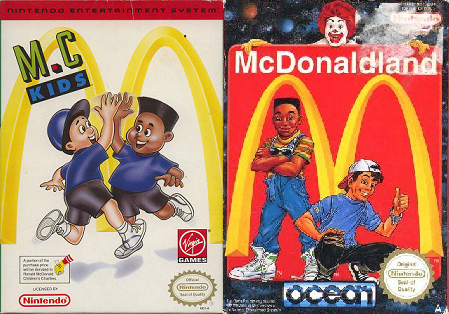
M.C. Kids (US)/McDonaldland (EU)
NES Ė 1992
For those of you not in the know, the titular kids in M.C. Kids must collect cards for Ronald McDonald and his posse. To find these cards, the kids explore a series of short, linear stages. Itís possible to clear a stage and move onto the next without finding any cards, but if you need more cards later, you can revisit previous stages as many times as you want. The thing is, you need to find a certain number of cards before you can access the next world.
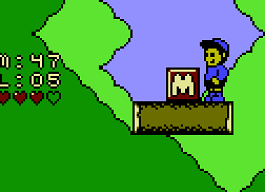
Cards are clearly labelled ďM,Ē for ďCard.Ē
M.C. Kids typically garners two responses: ďthis game owns,Ē and ďthis game sucks.Ē
A little over a decade ago, it seemed like the internet loved M.C. Kids. For instance, on its GameFAQs page back in 1997, user KGifford posted a pretty intense guide, featuring full maps for each stage and commentary on how to get each card--the kind of treatment youíd find in a Nintendo Power Playerís Guide. (Granted, he didnít make the maps himself, but he did supply the valuable commentary.) Apparently its developer, Virgin, was pretty confident in the game, too, saying that, "With the apparent termination of the Super Mario Brothers series on the NES, M.C. Kids is destined to fill that spot." In addition, M.C. Kids designer Gregg Tavares says, "Iíve always been disappointed at how poorly M.C. Kids did in the market."
However, the game has plenty of detractors, the most popular being the Angry Video Game Nerd.
Folks on both sides of the argument have plenty of fodder. In M.C. KidsĎ defense, the levels often have pretty neat structures, and the gameís block-grabbing mechanic can be interesting. On the other hand, the game features downright boring enemies, and itís not afraid to toss the occasional blind jump at you. Also, people say the controls are too floaty, but I say they can go eat a ham.
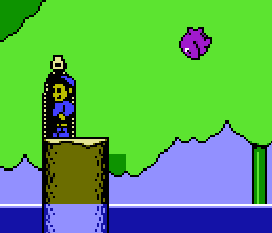
Could you seek with me a secret place,
A clearing in the forest
And find the answer there?
M.C. Kids is worth consideration for its simple, straightforward approach to collectibles.
For most worlds, you must collect five cards to move on to the next world. This makes for three classes of cards in M.C. Kids. First are the cards that count for clearing the current world; second are the cards that count for clearing a future world; third are the secret cards that grant access to an optional and secret world.
For instance, you must find five of CosMcís cards to clear CosMcís Retreat. Five of CosMcís cards are hidden within his world; this is the first class of card. One more of CosMcís cards is hidden in the previous world; this is the second class. Itís in your best interest to look for all of the cards, but your immediate concern lies with the first class. Cards that count for a future world, while helpful, are largely optional.
The cards for future worlds are nice for the most part, but they can turn out to be a pain at the end of the game; you must find all of Hamburglarís cards to clear his Hideout, and three of those cards are hidden in previous worlds.
Cards to clear the current world are the easiest to find. Most of these cards are placed in plain sight or hidden just out of your reach.
Letís take a look at Captainís Ship, the fifth stage of Professorís Workshop.
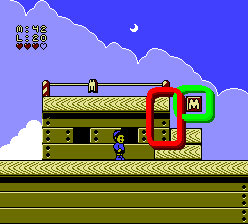
At the end of the stage, you see this card (boxed in green), but canít reach it from this angle. You canít crawl through that one block gap (boxed in red), and you canít jump over the stage goal.
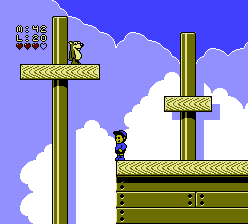
So your only option is to backtrack (go left) until you can find another way around the ship to get to the card. Upon backtracking, you find this pit. There's no visible ground below, so you might assume it's a bottomless pit.
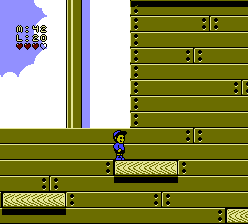
A leap straight down reveals that this was not a bottomless pit after all. Time to go forward (right) and see if you can meet the card from under.
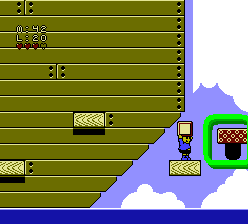
Going forward, youíll come across this springboard (boxed in green).
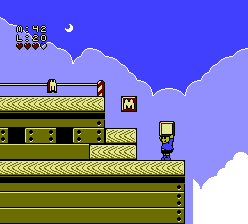
Take the springboard, and youíve found the card.
Hereís a video of the stage to give you a better idea of how a playthrough of the stage goes.
In this case, you can see the card, but you canít get to it, prompting further exploration. Since you can see the card, you have a clue as to where to search--itís a matter of finding a different route to that end goal.
Cards for future worlds are often hidden just offscreen. Recognizing suspicious features of the level layout can be key to finding these cards. Letís take a look at Ports oí Comets, the first stage of Professorís Workshop.
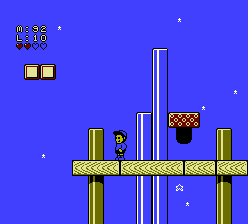
Near the end of the stage, you come across this springboard. You can complete the level easily without using it, and picking up a block in order to use the springboard can be tricky.
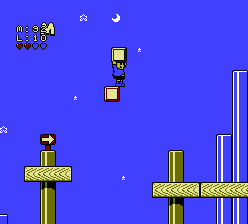
You have to stand on one of these blocks while picking up the other.
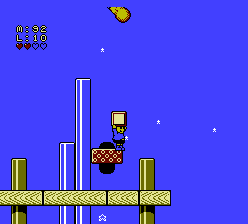
Once you use the springboard, though...
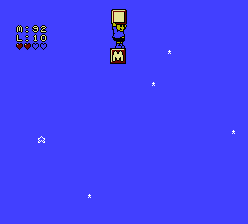
...you find a card that will count towards clearing CosMc's world, which is one world ahead. This counts as the second class of card, since it will help in a future world.
In this case, you arenít teased with a card just out of reach. This card is a little more subtle, asking you to leave the main path to find something nice.
Secret cards are placed similarly; the level design will leave a clue for the player to find. However, the clues for secret cards are rarely so obvious as the clues for cards for future worlds. The secret card hidden in Ports oí Comets serves as an example of this.
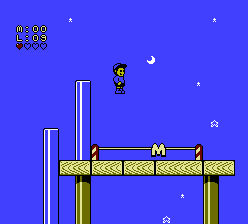
The clue here is that the goal tape is short enough to jump over at max speed. Rarely is a goal tape in M.C. Kids this short. This aberation from the usual level goal makes this spot suspicious.
Itís worth noting that this stage is composed of short, disconnected platforms, so building up to max speed can be difficult. Not only is it challenging to find this secret card, itís challenging to get over the goal tape.
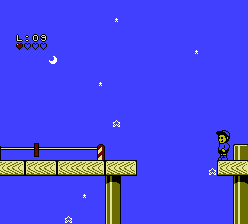
M.C. Kids does have some blind jumps, and this is one of them. Though this hole is suspicious, Iíll admit that this is a nasty trick to play...
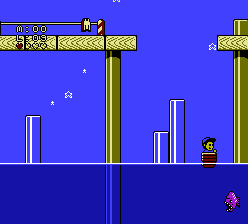
...especially since itís easy to miss the boat, fall in the water, and get eaten by the fish. But, take the boat to the left...
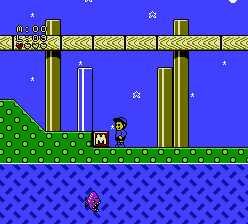
...and you come across a secret card. Nice.
So there you have it. The cards you need immediately tease you by being visible while outside of your grasp. The cards that will prove helpful later are hidden just out of view, requiring you to pick up on elements straying off of the main path. Secret cards require some investigation and a keen eye for possible hiding spots.
Not an earth-shattering revelation, but I hope it lends some insight on the game. It can be hard to notice this kind of thing when all three brands of cards use the same sprite.
These are more rules of thumb than hard and fast rules. Still, this approach lends the game a nice difficulty curve to be explored on replays; just getting by is much different than finding all of the secret cards. And, well, considering that this game doesnít have a save feature, youíll be replaying it a decent amount if you want to finish it. There are infinite continues, but youíll want to turn the console off at some point.
Also, this essay doesnít speak at all about the progression of stages in M.C. Kids. The game gets harder as it progresses, but how does this increase in difficulty influence the card placement? Itís something to ponder.
Thereís also a European Game Boy game called McDonaldland, but itís an entirely different game (although it features a similar block-grabbing mechanic). It was released in the US as Spot: The Cool Adventure, featuring the mascot of the 7-Up soft drink. I donít know why that guy got so many games.
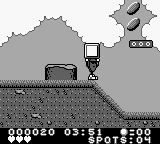
comments powered by Disqus
All original content on VG Thought was written by Greg Livingston AKA Golem.